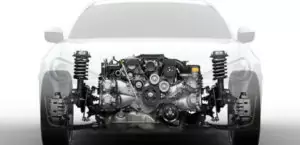The 2.0-liter Toyota 2C diesel engine was assembled at a factory in Japan from 1983 to 2001 and was installed on many mid-size models of its time, such as the Crown, Carina, Corolla. With a transverse arrangement of this power unit under the hood, it was often called 2C-L.
The Japanese concern produced Toyota 2C-E from 1997 to 2001 and installed it only on the Corolla model for markets with increased environmental requirements. This unit differed from other 2C motors in the presence of an electronically controlled injection pump Denso.
The Toyota 2C-T turbo diesel engine was produced in Japan from 1984 to 2001 and was installed both on LiteAce and Town Ace minibuses, and on Carina and Camry passenger cars. Such motors in a transverse arrangement were called 2C-TL, versions with a 2C-TLC catalyst.
The company assembled the Toyota 2C-TE turbo diesel engine from 1997 to 2000 and installed it only on the pre-styling version of the Avensis model for the European market. This motor differed from other 2C units in the presence of an electronically controlled injection pump Denso.
Specifications
| Production years | 1983-2001 |
| Displacement, cc | 1974 |
| Fuel system | prechamber |
| Power output, hp | 70 – 75 (2C) 72 (2C-E) 80 – 90 (2C-T) 90 (2C-TE) |
| Torque output, Nm | 125 – 135 (2C) 131 (2C-E) 165 – 175 (2C-T) 203 (2C-TE) |
| Cylinder block | cast iron R4 |
| Block head | aluminum 8v |
| Cylinder bore, mm | 86 |
| Piston stroke, mm | 85 |
| Compression ratio | 23.0 |
| Features | SOHC |
| Hydraulic lifters | no |
| Timing drive | belt |
| Phase regulator | no |
| Turbocharging | no (2C, 2C-E) yes (2C-T, 2C-TE) |
| Recommended engine oil | 5W-40 |
| Engine oil capacity, liter | 4.1 (2C, 2C-E) 4.9 (2C-T) 5.0 (2C-TE) |
| Fuel type | diesel |
| Euro standards | EURO 0 (2C) EURO 2 (2C-E) EURO 1 (2C-T) EURO 2 (2C-TE) |
| Fuel consumption, L/100 km (for Toyota Corolla 1995) — city — highway — combined |
8.6 5.6 6.7 |
| Engine lifespan, km | ~250 000 |
| Weight, kg | 165 (2C) 167 (2C-E) 178 (2C-T) 180 (2C-TE) |
Disadvantages of the Toyota 2C engine
- The cylinder head has a low resource here, it often bursts from overheating;
- Another problem with the cylinder head of such diesel engines is the cracking of valve seats;
- Due to the loss of tightness of the air ducts, a lot of dust enters the combustion chamber;
- Then this abrasive contributes to the rapid wear of the cylinder-piston group;
- The turbine and timing belt also do not last long, and with its breakage, the valves usually bend.






